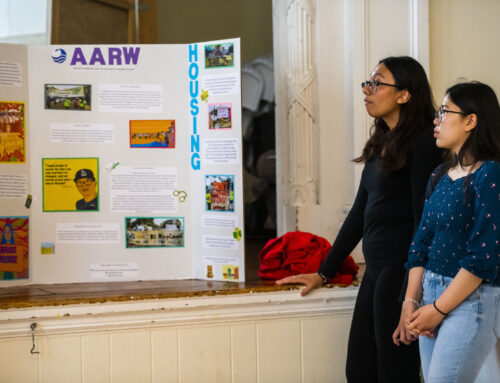
From Print Issue 3: Community.
From ancient Egyptian kingdoms ruled by pharaohs to Napoleon’s reign and more recently, the founding and existing government of the United States, the civilizations we’ve been trained to study and admire throughout history were predominantly headed by and made for men. Yet amidst the popular patriarchal society we do our best to navigate and exist in today, matriarchal communities, where women serve as the leading force in all social, political, and economic aspects, have thrived and continue to exist around the world today.
Now before you think matriarchal societies strictly propagate “anti-male” sentiments, it is important to understand that the focus of these societies lies in nurturing mutual respect and not exercising power or control over others, as the patriarchal society often leans towards. One fundamental difference between how our modern ways of living differ from those of matriarchal societies is their heavy emphasis on the giving and sustaining of life. This mindset, rooted in ancient practice, reveres and respects women for their unique and essential ability to bear and care for children. Women in matriarchal societies are never alone, with the resources and help to raise and educate their children prioritized above all.
Many scientists theorize that the first human societies were not at all patriarchal, as the earliest humans lived as hunter-gatherers without the concept of residing with and ceding control to the male’s side of the family. Prehistoric evidence of female-focused art found across the world such as an abundance of Venus statues and figurines suggest early matriarchal rule, as female icons were worshipped as symbols of fertility and strength. Greek myths passed down tales of the female warrior tribe of Amazons who participated in the Trojan War and have been said to invent the cavalry, further contributing to the early roots of female power. However, once agriculture and permanent settlements began to form, power began to shift to the male individuals of the family who became in charge of collecting and defending resources. While legendary societies such as these may seem mythological or things of the past, as matriarchal societies are inevitably scarce, places where women are free and in ruling positions continue to exist around the world.
In the southwest region of China, the Mosuo society passes down the mother’s last name as well as property through the female bloodline. Contrary to patriarchal societies, women are kept in charge of business and men are in charge of animals and agriculture. With around 40,000 members, the Musuo also practice a tradition known as zouhun, or a walking marriage, where without judgment or negative stigma, women are free to have different sexual partners. Children are raised predominantly in the mother’s house, with additional support provided by the rest of the community.

Moving west to the nation of Kenya, the Umoja has served as a safe haven for women who have experienced gender-based violence, sexual assault, forced marriages, and mutilations. Umoja, meaning unity in Swahili, was founded in 1990 by Rebecca Lolosoli to provide a nurturing environment for victims of rape by British soldiers who occupied Kenya at the time. While the society has traditionally been female-only, women strive to educate visiting tourists and nearby villages on their rights. In addition, women engage in crafts such as the making of jewelry to sell to their visitors, using the profits to sustain their community.
The Akan clan located in Ghana is a society that is built and centered around the matriclan, or female-founded, and led communities that make up the larger society. These female founders dictate the roles that community members take on and are in charge of handling wealth and politics. Roles are passed down matrilineally, or down the female side, allowing men to hold leadership positions within this society including over childcare and the acquisition of resources, placing both men and women on a more equal footing within the matriclan.
Although most of these matriarchal societies are small and scarce communities, which large and powerful nations might not be capable of transitioning into overnight, there is still value in learning about these societies and their successes. Our whole lives have been dictated by male dominance, and in turn, we have been conditioned to believe that it is systems of patriarchy and the male gender that work to rule our culture and society. Even in today’s modern world our sense of modernity and how our world is supposed to function is rooted in the patriarchal gaze, convincing us that societies where women lead are out of reach and impossible to realize. Matriarchal societies are not fantasies or myths left in the past but are real-world communities that have forgone the evils of greed and dominance, who we must look to for inspiration. Respecting women’s bodies in regard to healthcare and maternal rights, erasing the stigma against individuals who freely embrace their sexuality, and having equal representation in public offices should be what we all continually work towards in our own spheres of the world.



